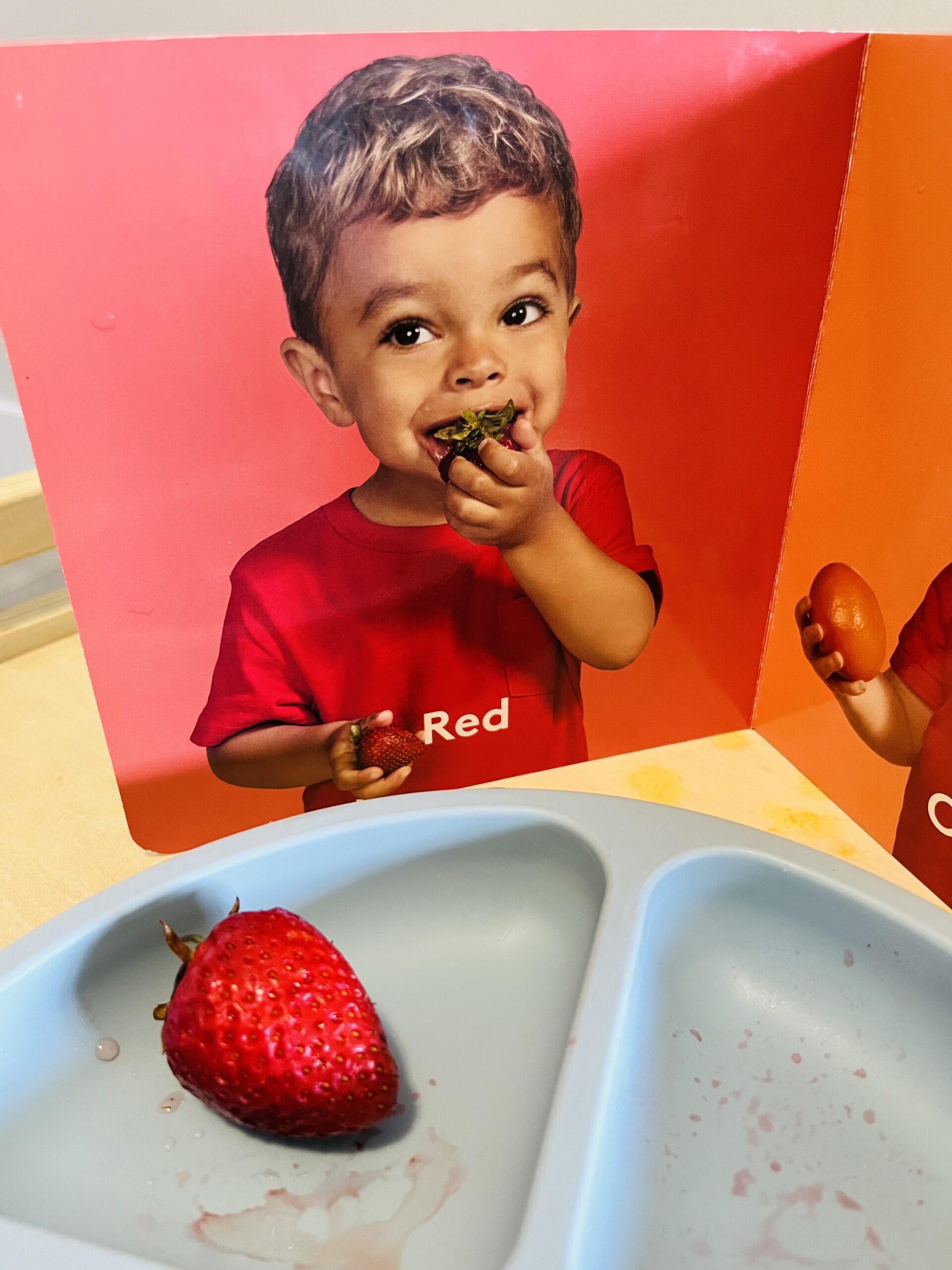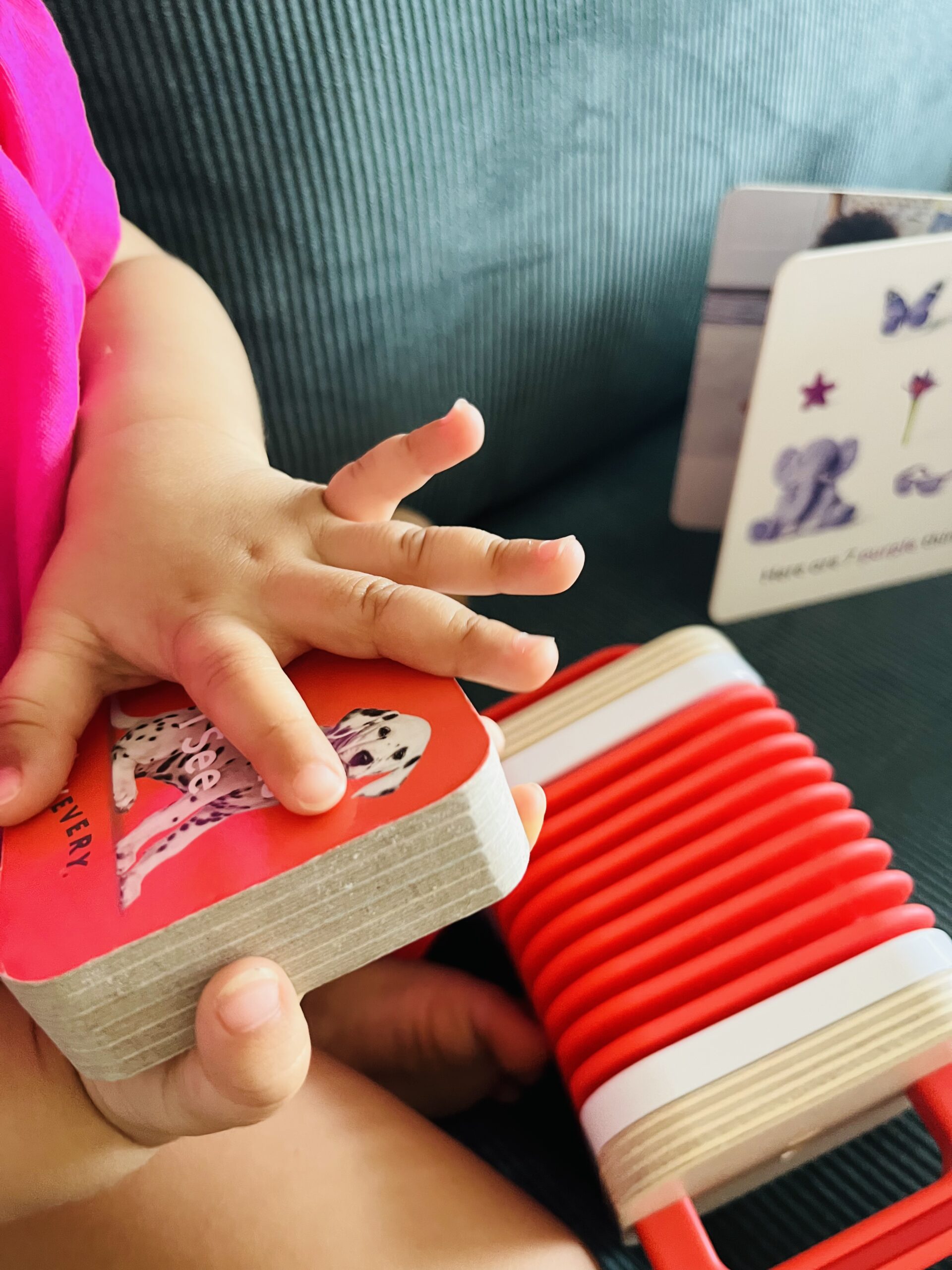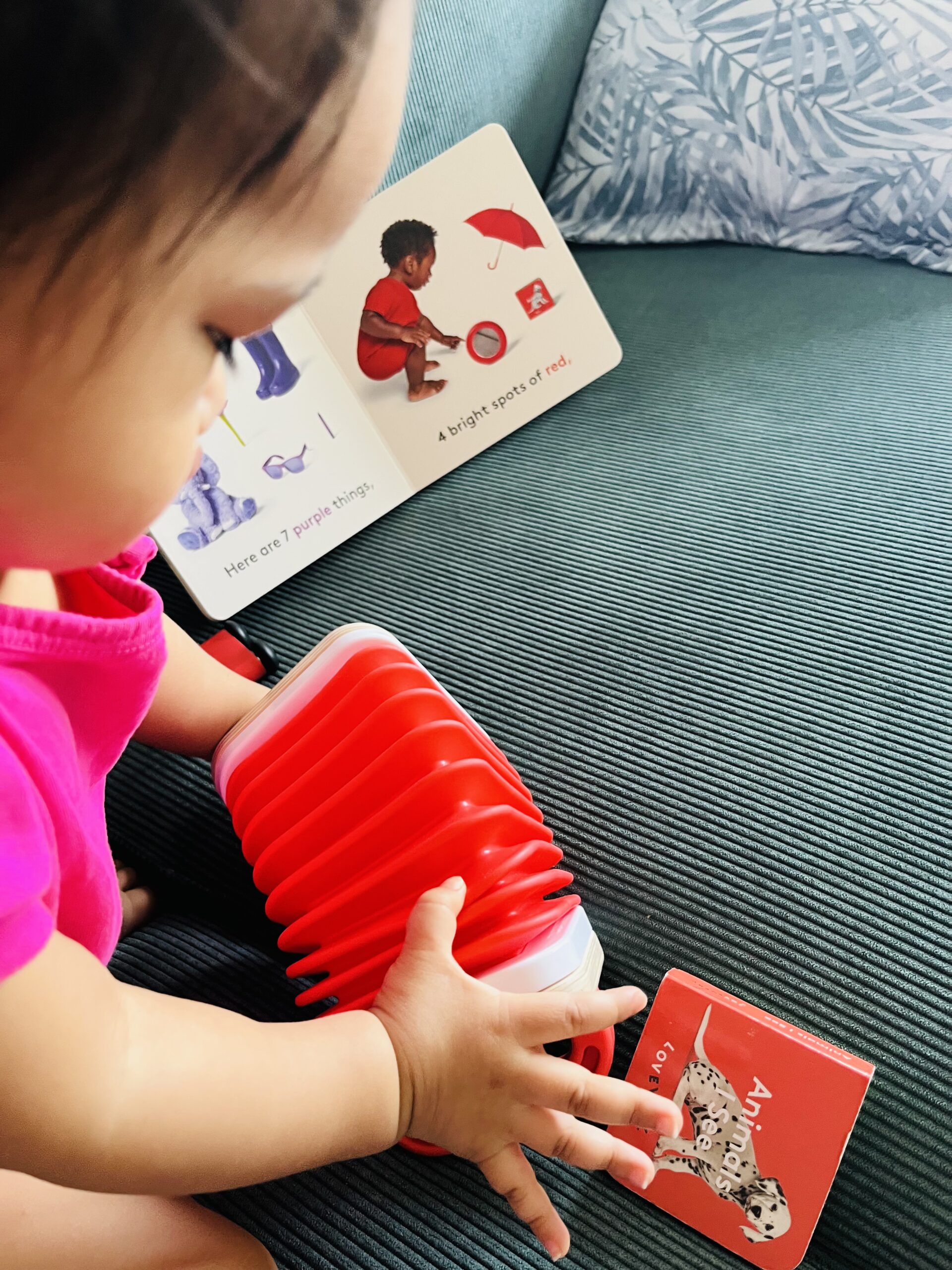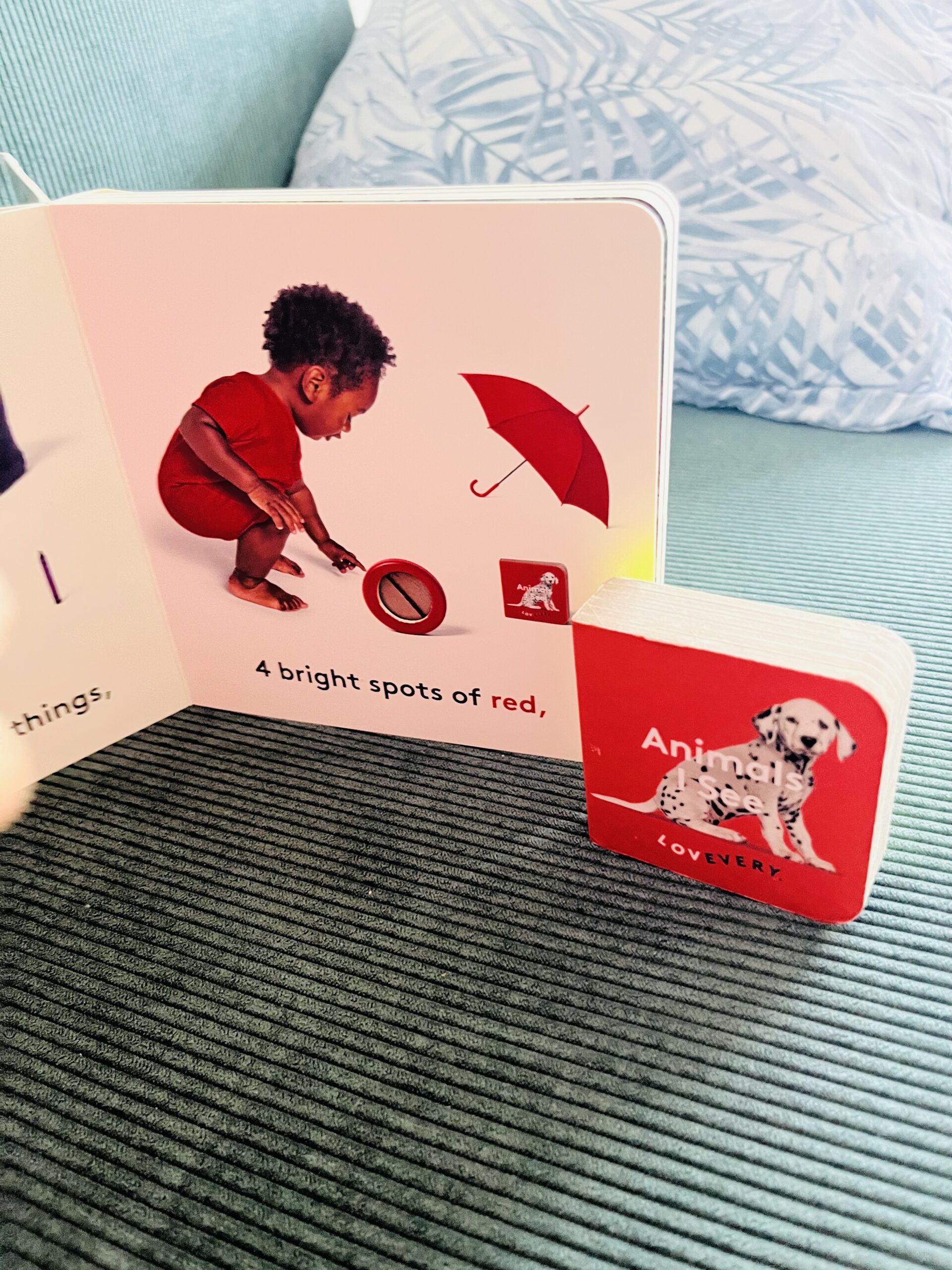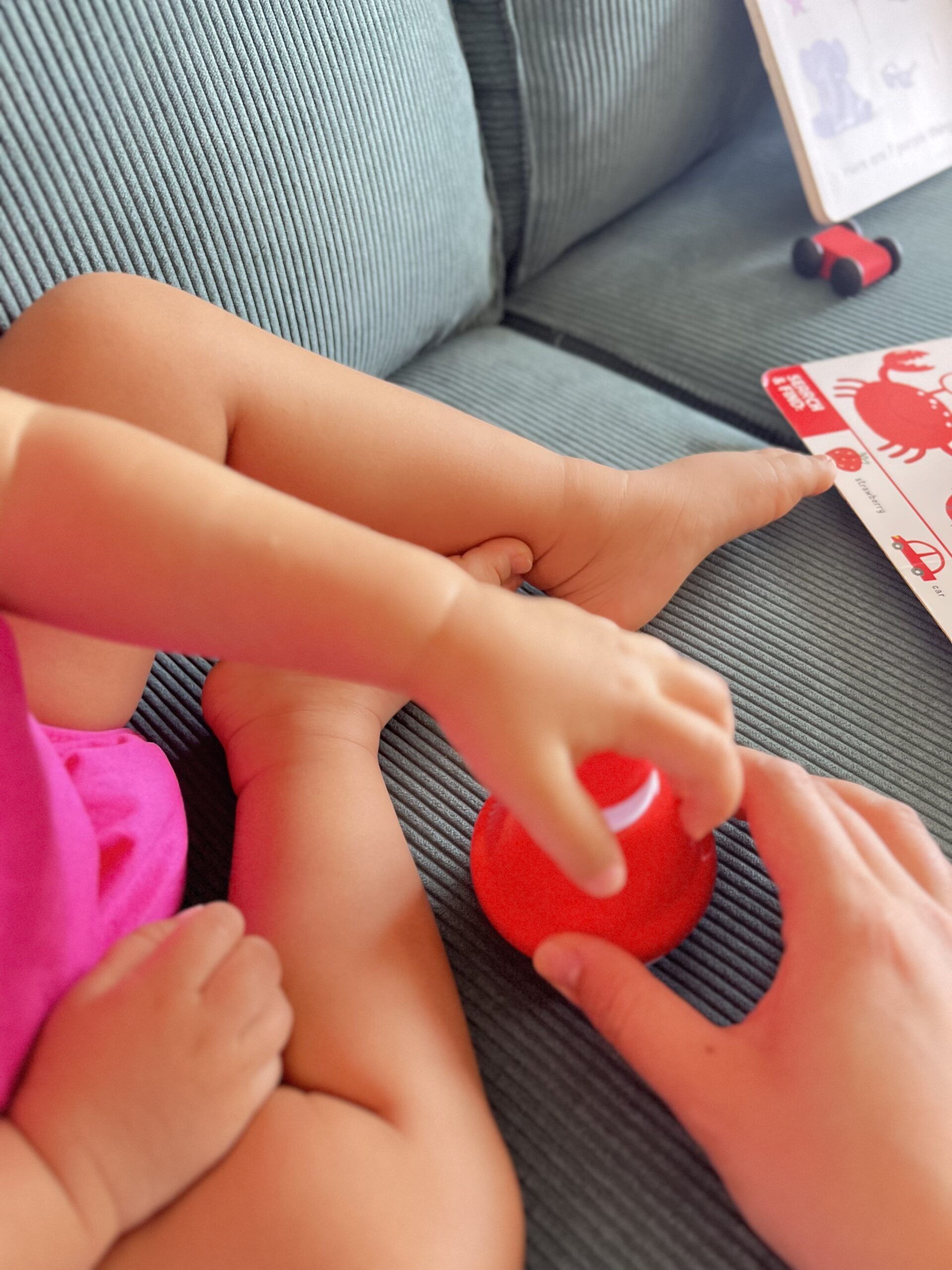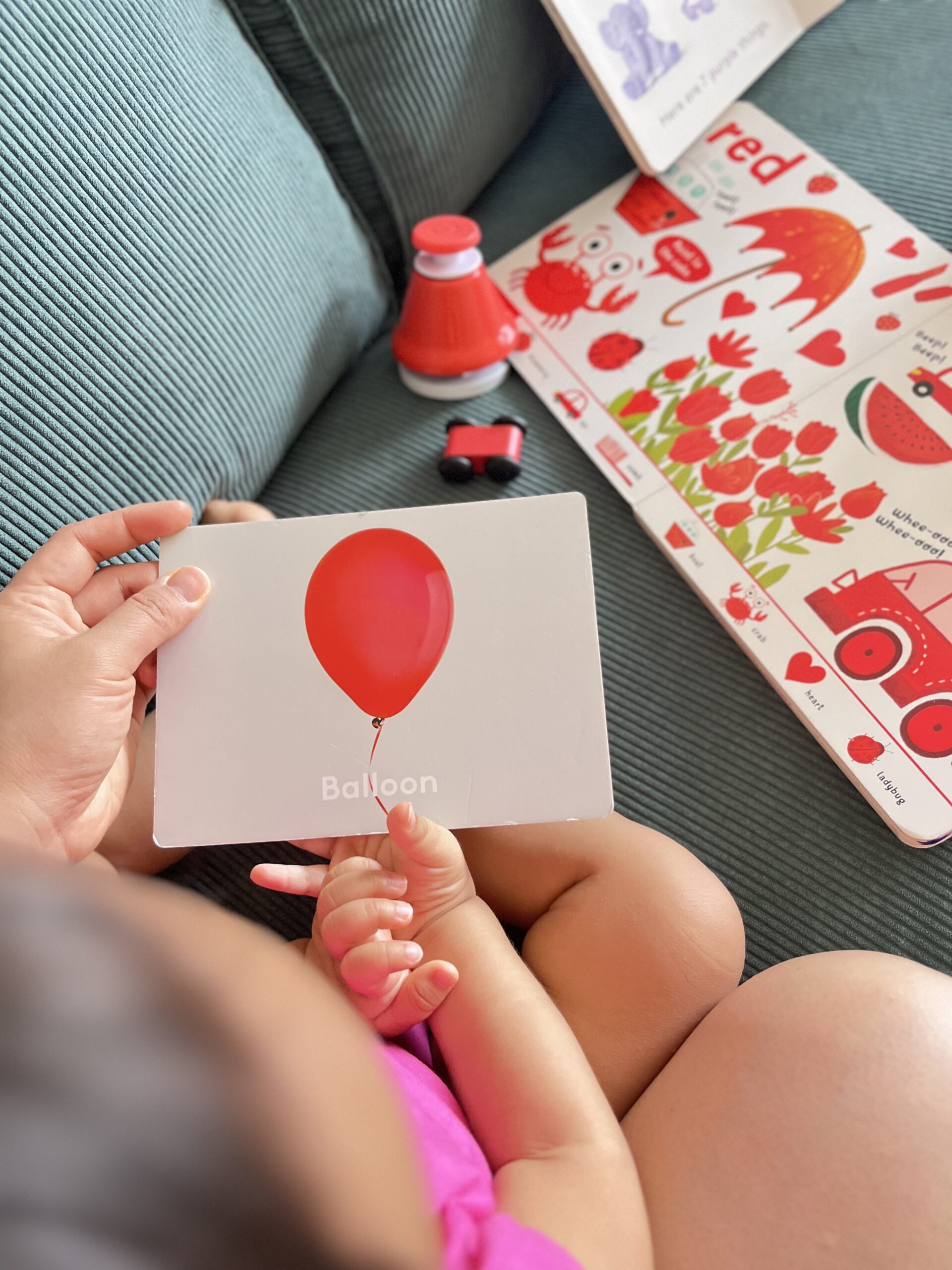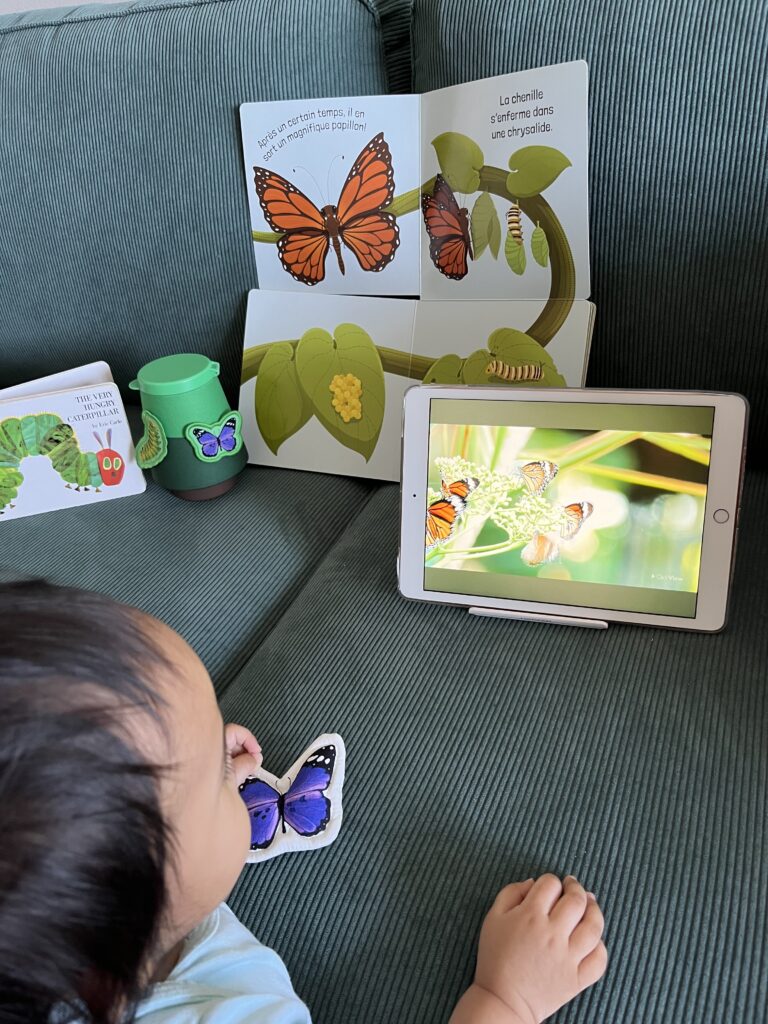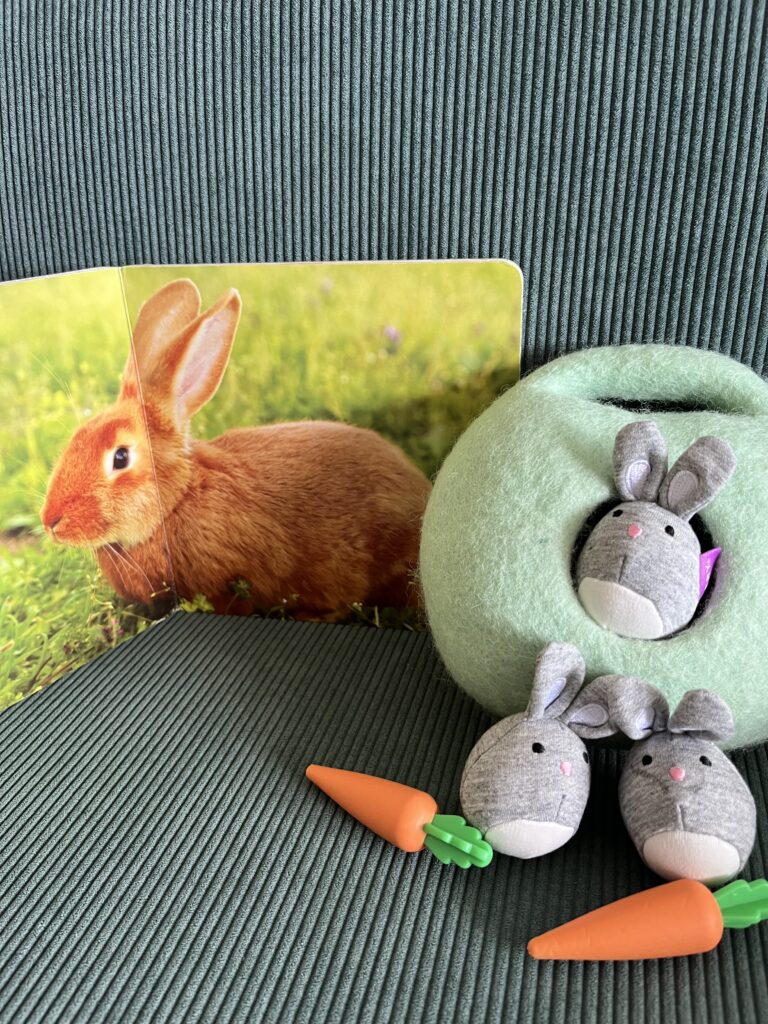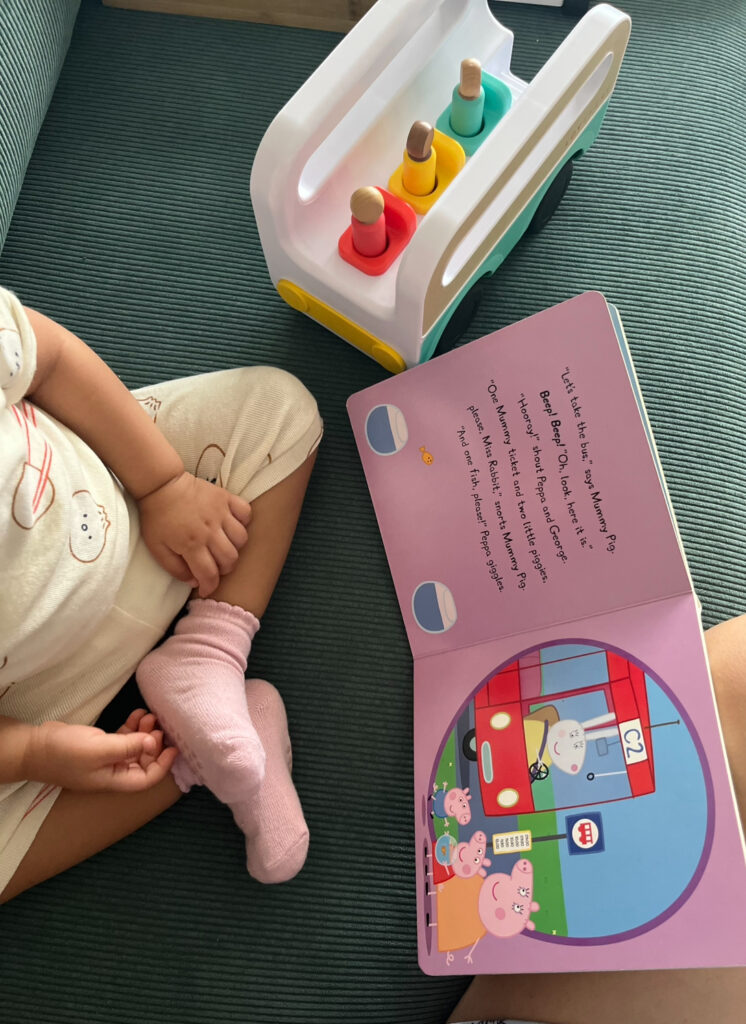Red is bold, bright, and hard to miss, making it a great first color for toddlers to notice. This play plan helps your child connect the word “red” to what they see through books, toys, snacks, and everyday moments.








Books, flashcards, and hands-on objects all work together to make red more than a color; it becomes a part of everyday learning.
About This Play Plan:
This play plan introduces your toddler to the color red, one of the three primary colors and a word that’s often one of the first toddlers can learn to say. Its bright, bold appearance makes red stand out in a toddler’s world, from toys to fruit to clothing.
Because “red” is short and phonetically simple, it’s typically one of the earliest color words toddlers begin to repeat. This plan encourages that connection through repetition, hands-on play, and everyday encounters.
Please note that while toddlers begin to notice how there are different colors starting from 12 months, color recognition typically begins to develop between 18 months and 2.5 years of age. Also, every child progresses at their own pace. But even if your toddler isn’t ready to say or identify colors yet, repeated exposure to bright, easily noticeable hues like red helps build those early brain connections, setting the stage for learning colors naturally through play.
How to Use This Plan:
- Gather Your Materials: Check the list below for everything you’ll need.
- Follow the 5E Tabs: Each tab provides step-by-step guidance, creative ideas, and reflection prompts to make the experience more meaningful.
- Let Your Child Lead: Observe how your child interacts with the materials and adjust based on their interests and developmental stage.
Spark your child’s curiosity:
Start by reading toddler-friendly books that highlight the color red.
Point to the red items and say clearly, “Red!” as you touch each one, like a strawberry, fire truck, or balloon. Keep your voice upbeat and slow, allowing time for your toddler to look and take it in.
Encourage hands-on exploration:
Let your toddler interact with red-themed objects like the red Lovevery concertina, red stacking cups, flashcards, or red toys.
Say “red” each time they touch or pick up something that’s red. For example: “Red cup,” “Red balloon,” “That’s red!” Repetition is key at this stage.
Provide simple, age-appropriate explanations:
As they continue to play, label what they’re doing using short, clear phrases. “You’re shaking the red concertina,” or “You picked the red book.”
Speak slowly and clearly, repeating the word “red” often to help them connect it with the color. Try to avoid quizzing them or ask them to say it; just model it naturally.
Expand on the activity:
Bring the learning into daily life. Point out red objects during meals (like strawberries or tomatoes), at the park (like red flowers or signs), or during dressing (a red shirt or socks).
Use simple phrases like, “Your shirt is red,” or “Look, a red ball!” The more they hear it in context, the stronger the connection becomes.
Reflect on how your child responded to the play:
- Do they show more interest in red objects?
- Are they starting to look when you say “red”?
- Do they pick up or point to red things more often?
- Are they beginning to repeat the word, or make a sound when you say it?
This stage is all about exposure and playful repetition. Keep it pressure-free and fun.
Materials List:
- A toddler-friendly book about colors (especially with a focus on red), such as the Lovevery Colorful Foods
- Red objects from your toy shelf (e.g. Lovevery concertina, Animals I See book, the red balloon textured card)
- Red fruit or snack for snack time (e.g. strawberries, tomatoes)
- Optional: Red clothing or accessories to wear during the activity
- A small tray or basket to collect and group red items together
Tips for the Grown-Ups:
Follow the Child’s Lead:
Observe how your child interacts with the playthings. Let them guide the session by following their interests. If they show a preference for exploring textures, sounds, or colors, embrace it. Be a silent observer, ready to expand their learning with gentle, supportive language.
Create a Calm, Inviting Space:
Set up a clutter-free area that encourages focused exploration. Use natural light and simple setups to inspire curiosity. If the weather permits, take the play outside for a richer sensory experience, connecting with the natural world.
Encourage Open-Ended Play:
Embrace imaginative twists and unexpected uses for the toys. If the activity takes a surprising turn, celebrate this as a sign of growing cognitive flexibility and problem-solving.
Our Own Play Experience
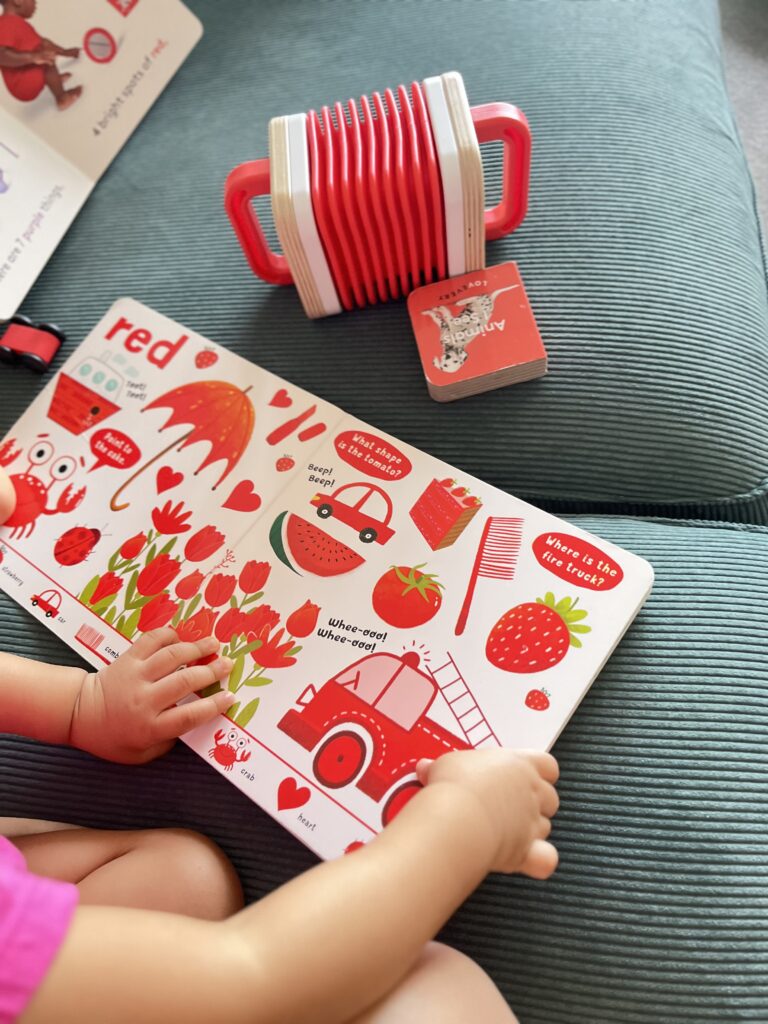
When we first picked up Lovevery’s book Colorful Foods around her first birthday, that was the first time we actually labeled the colors.
But during this play plan at 15 months, I made a point to emphasize the word “red.” She isn’t saying “red” yet, and I’m still observing whether she can distinguish red from other colors.
But that’s not the goal right now. The idea was simply to introduce the word in context, like saying “That’s a red concertina” when she plays with it, or “You’re patting the red bell” with the Lovevery Music Set.
We also borrowed a color-themed book from the library, and she enjoyed flipping through the pages while I pointed out red items.
The most fun part of this experience for me was giving her a fresh whole strawberry to explore as we said “red” and “strawberry.” She hasn’t acquired the taste for it yet, but I loved being able to include a full sensory moment: letting her look at it, touch it, smell it, and even give it a try.
It’ll be fun to keep watching how she responds to colors over time, especially when we start playing with blue and yellow next.
Please Note: I am a proud Lovevery subscriber and fan, and many of the play plans shared here feature Lovevery playthings. However, this site is not affiliated with or endorsed by Lovevery. All ideas and recommendations are my own, based on my experiences as a mom who values meaningful, play-based learning.
Share this play plan:


